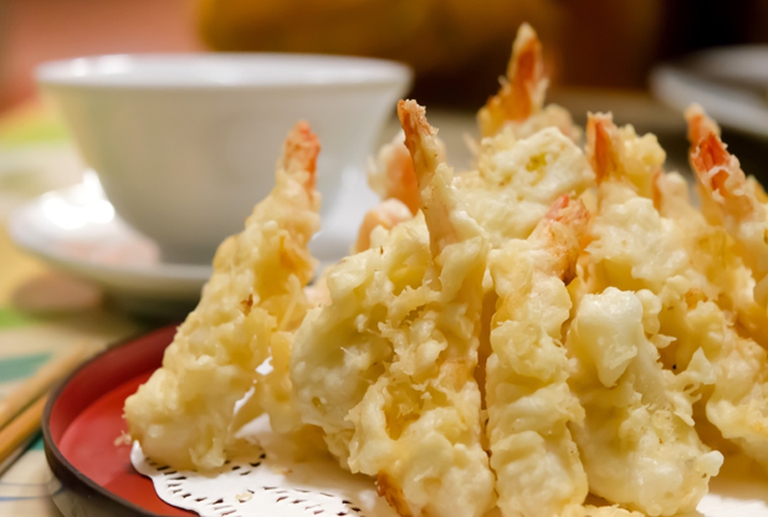In Japan, with the tempura batter is used mainly to prepare seasonal vegetables, shrimps and squids, on rare occasion meat. Tempura is a particularly light kind of frying technique, with which luscious and crunchy food is prepared. And it is easy to prepare, if you know the basic rules to make it. The batter
In Japan, with the tempura batter is used mainly to prepare seasonal vegetables, shrimps and squids, on rare occasion meat. Tempura is a particularly light kind of frying technique, with which luscious and crunchy food is prepared. And it is easy to prepare, if you know the basic rules to make it.
The batter
According to the original recipe, the batter is made of two ingredients only: water and flour. It is preferable to use rice flour but you can even use 00 flour. The water should be sparkling and very cold. You have to add the flour to the water all at once and you don’t need to mix it well, on the contrary you should leave lumps in the mixture. Put the batter in the fridge, keep it and use it cold. (Pro Tip: For restaurants it’s advisable to use a good refrigeration equipment for a better productivity.)
![tempura-gamberi]()
Things to know about tempura
The lumps result in the unique fluffy and crisp tempura structure when cooked. That’s why Japanese people mix the batter for a few seconds using chopsticks.
Not only should the sparkling water be cold to make a perfect tempura, but even the ingredients you want to fry: cut them as you prefer and keep them into the fridge until you use them. Employ cold pressed sunflower seed oil to fry the ingredients.
To produce a light and crispy batter the temperature of the batter must be very different from that of the oil (thermal shock). Basically, you should deep-fry the battered food in oil at about 175 degrees. In this way, the food is wrapped up and it doesn’t absorb oil. By scooping out a few bits of batter on each ingredient while it is frying, you can obtain its typical aspect.
The oil temperature should be stable and you should put in your pan an adequate quantity of ingredients at once: if you put too many foods, the temperature is likely to lower too much.
Deep-fry vegetables for a few seconds and shellfish or squid for a few minutes, until the batter is golden. Eat it hot.
![tempura-di-verdure]()
The most suitable vegetablese
Carrots, courgettes, peppers cut into sticks
Sliced champignon mushrooms
Broccoli tops
Half-cut artichokes
Aubergines cut into rounds
Small tomatoes (like cherry tomatoes)
Sliced red onion
Asparagus
Pumpkin and courgette flowers
Green beans
Translated by Francesca Clemente
Siamo anche su WhatsApp.
Segui il canale ufficiale LifeGate per restare aggiornata, aggiornato sulle ultime notizie e sulle nostre attività.

Quest'opera è distribuita con Licenza Creative Commons Attribuzione - Non commerciale - Non opere derivate 4.0 Internazionale.










